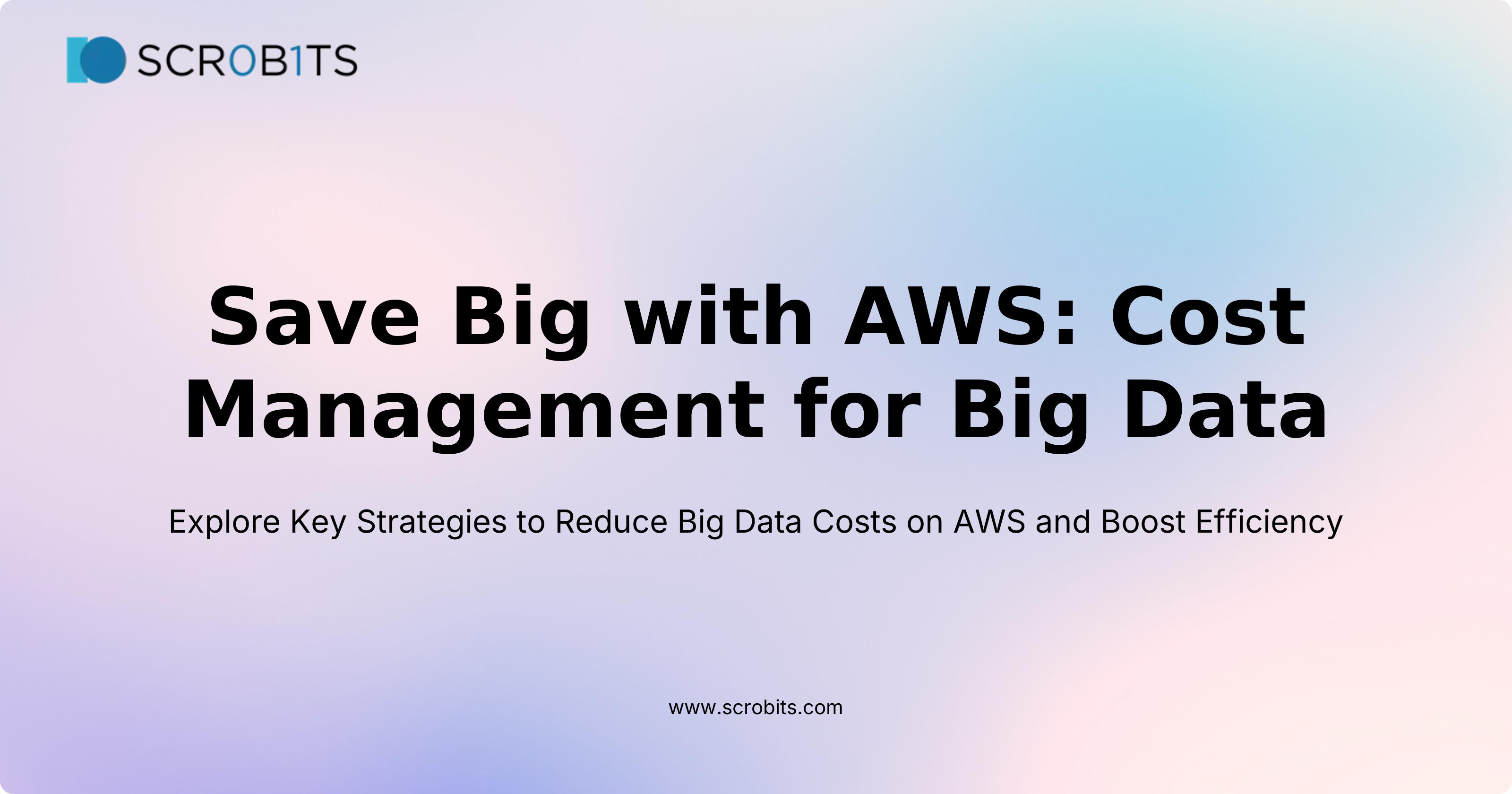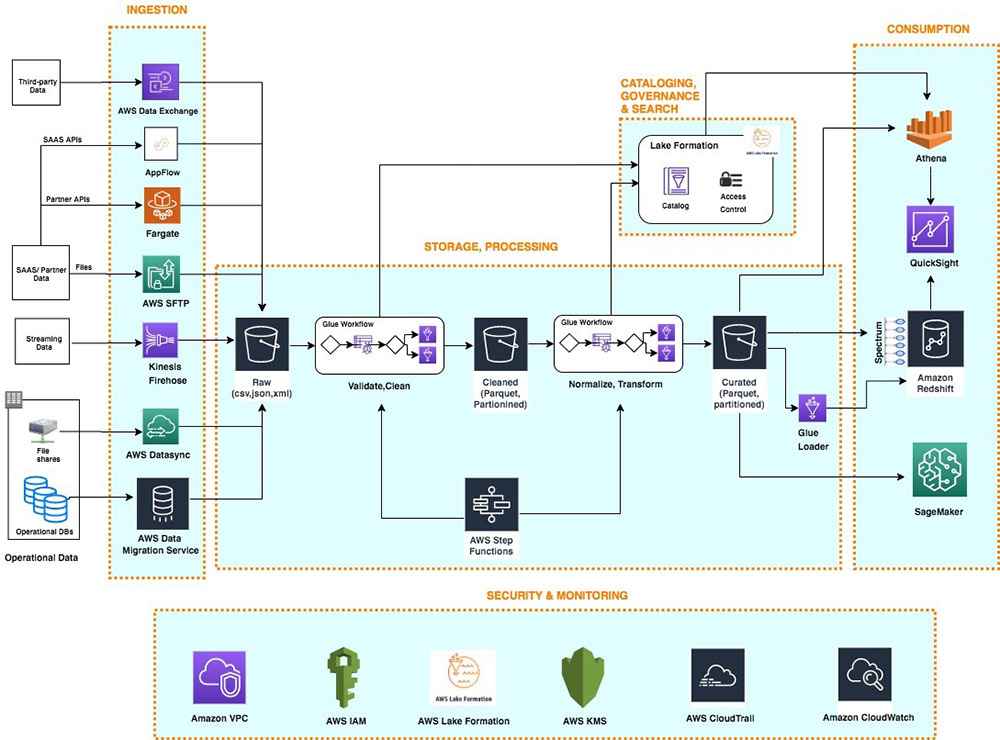Save Big with AWS: Cost Management for Big Data
 Arpit Shrivastava
Arpit Shrivastava
Managing costs for big data analytics on AWS can seem like wandering through a maze. But, it’s not as tough as it sounds.
With a few smart strategies, you can save a lot!
How AWS Helps You Save
AWS offers many ways to help you keep expenses in check. You can stick to your budget without missing out on performance.
1. Get Discounts with Savings Plans and Reserved Instances
Savings Plans and Reserved Instances are a big win for cost savings on AWS. You can earn huge discounts by committing to services like EC2, Amazon SageMaker, Amazon RDS, and Amazon Redshift.
These plans can cut costs by up to 72%! It’s a real game-changer.
2. Pay Only for What You Use
With AWS, you only pay for what you actually use.
No hidden fees or surprise charges at the end of the month! Keep costs down by optimizing your use.
This means avoiding charges for resources you’re not really using.
3. Rightsize Workloads
Ever wondered why you didn’t think of this sooner? By right-sizing workloads, you ensure you're using just the right amount of resources.
Not too little, definitely not too much. This keeps your expenses in check.
4. Modernize Cloud Architecture
Modern cloud architecture makes processes smoother. It boosts efficiency and reduces costs. AWS makes it simple to update your architecture.
This means incredible savings for you in the long run.
Want to dive deeper into AWS cost management strategies for big data? Keep reading for plenty of tips and tricks to help you master your AWS costs. Turn your spending from a complex headache into a streamlined, budget-friendly game plan.
Navigating AWS costs can feel like finding your way through a maze. But fear not; there are bright spots!
Let's explore how Amazon S3 can help you cut down on expenses.
Leveraging Amazon S3 for Cost Reduction
Feeling overwhelmed by the rising costs of cloud data storage? You're not alone! Amazon S3 is a lifesaver for cutting AWS big data expenses.
With some straightforward strategies, you can make your AWS data analytics cost planning more efficient than you ever imagined.
To kick things off, look at the different storage classes Amazon S3 provides.
It's like choosing how deluxe your cloud storage needs to be. For example, if you store data that you don’t access often, using S3 Glacier or S3 Glacier Deep Archive could slash your storage costs by up to 80% compared to the S3 Standard.
Another trick that's super helpful is intelligent tiering. It shifts your data to the most cost-effective storage tier as access patterns change, with no hit to performance and zero operational hassle.
This method is both clever and budget-friendly.
You might ask: How do I chop down AWS S3 costs? Well, lifecycle policies could be your answer. By setting rules to move or delete data when certain criteria are met, you avoid letting unnecessary data hang around. Trust me, cleaning out obsolete data can noticeably reduce your AWS bill!

Cost optimization isn't just about cutting back—it's about smarter management of the essentials.
Just last year, AWS users who applied these strategies saw a 30% average drop in data expenses. Now, that’s not just a number—it’s real evidence that a bit of planning can mean big financial relief.
But don't stop with S3. Let’s delve into other services and techniques to make your AWS costs as light as possible.
Navigating AWS can feel like steering a ship through tricky waters, especially when managing costs for big data projects. But don't worry, I've got some fantastic strategies to keep your expenses in check while making the most of AWS's powerful tools.
Reducing Operating Expenses
Every dollar counts when you're diving into AWS for big data analytics. Let's explore some ways to stretch those dollars further.
Big data cost reduction techniques on AWS:
AWS offers services like Amazon RDS. This service can significantly lower costs by automating tasks like hardware provisioning, database setup, and backups.
This automation not only reduces the workload for your operations team but also cuts down your operating expenses directly.
Financial management for AWS big data analytics:
Managing finances might seem daunting, but AWS Cost Explorer is a real lifesaver. It gives detailed visualizations of costs and usage.
It helped me see where my spending was spiraling and allowed me to make smarter decisions to cut unnecessary expenses.
Question to ponder:
What is an example of an AWS service that can help reduce Opex costs?
Think of Amazon Aurora. It's a managed relational database service.
It's faster than traditional databases and comes with a pay-as-you-go pricing model—slashing costs effortlessly.
Cost-efficient AWS big data resources:
Consider Reserved Instances for EC2. They can save you up to 75% compared to On-Demand pricing if you commit to them for one or three years.
The first time I used Reserved Instances, the savings were astounding.
Question to assess:
What do you suggest to optimize the cost in an EC2 instance?
Spot Instances are a clever choice for non-critical tasks. They give you access to unused EC2 capacity at a fraction of the standard price.
For me, using Spot Instances was like stumbling upon hidden treasure in the AWS ecosystem.
Plus, AWS Auto Scaling optimizes your infrastructure in real-time, so you only pay for what you need, right when you need it.
Did you know optimizing your use of Elastic Load Balancers (ELBs) and fully utilizing AWS Trusted Advisor can reveal new ways to tighten your belt? Time to put those insights to work!

Optimizing costs with AWS for big data isn't just smart—it's transformative for your business.
When we get a grip on managing AWS expenses, we align our finances with our workflow. This way, every dollar we spend makes a difference in our results.
What is the purpose of AWS cost optimization?
Simply put, AWS cost optimization is all about using resources wisely. The goal? Achieve more with less money.
It lets us focus on growing and innovating without worrying about surprise bills.
When AWS expenses are optimized, we avoid wasting money. Instead, we invest in areas that really drive growth and return.
What advantages can AWS provide to save costs?
AWS stands out with its pay-as-you-go model. This means we only pay for what we actually use—ideal for expanding operations without overspending.
AWS also offers tools for analysis and planning. This helps us cut costs, especially by using reserved and spot instances for workloads we can predict.
By embracing these strategies, we can master big data expenses.
The key is to keep an eye on usage, always assessing and tweaking how we use AWS. This approach ensures we're getting the most from AWS while saving money.

Save Big with AWS: Cost Management for Big Data
Navigating big data can feel overwhelming. But managing its costs shouldn’t give you a headache. In our data-centric world, it's key to cut expenses while boosting efficiency.
AWS lets you do just that. Let me share some strategies and tools to help you slash your AWS costs, tailored just for big data.
Understanding AWS Cost Management Tools
Managing where and how much you're spending is a common business challenge. AWS offers tools that make this easier and more efficient.
AWS Cost Explorer: This tool helps you visualize and manage your past spending and usage. It’s user-friendly, allowing you to sift through data sets, spot usage trends, and even predict future costs. Here's something interesting: many companies have reported reducing their costs by up to 30% by using these insights effectively!
AWS Budgets: This helps you set up customized alerts when your AWS usage or spending exceeds specific limits. It’s like having your own financial advisor watching over every dollar.
If these tools are new to you, don't miss out on this Effective Ways to Utilize AWS Cost Explorer.
Maximizing Resource Efficiency
Running your resources efficiently means more savings. It’s simple. Here's how you can make it happen:
Auto Scaling: Adjust capacity to handle changes in demand smoothly. During busy periods, your systems ramp up; when things slow down, they scale back. This ensures you only pay for what you need.
Spot Instances: Use this trick to save as much as 90% compared to on-demand prices. By tapping into spare AWS compute capacity, you enjoy high-performance computing for less.
If you're a startup, check How AWS Helps Startups with Cloud Cost Optimization for more insights!
Transformative Strategies: Long-term Cost Reduction
Thinking long-term can also lead to big savings. Here's what to consider:
Commitment Savings Plans: Commit to using a set amount of AWS services for one or three years and enjoy discounts up to 72%! It’s ideal for predictable workloads.
Choosing the Right Storage Options: Picking the correct storage tier can significantly cut costs. For data that’s not accessed often, AWS’s S3 Infrequent Access can save you nearly 50%.
Explore more on long-term planning with our Guide to AWS Budget Planning for Startups.
Leverage Serverless Architectures and More
Switching to a serverless model can further cut costs by charging only for the compute power you actually use.
This way, you’re paying for exactly what you need, right when you need it!
In conclusion, managing big data operations doesn’t have to mean big spending. It’s about smart solutions and strategic planning.
AWS not only gives you robust tools but also the flexibility to customize them to fit your business needs perfectly.
References
Subscribe to my newsletter
Read articles from Arpit Shrivastava directly inside your inbox. Subscribe to the newsletter, and don't miss out.
Written by

Arpit Shrivastava
Arpit Shrivastava
I'm Arpit, Co-Founder of ScroBits. I love talking about IoT, SaaS and Cloud DevOps. We make IT outsourcing fun and effective with our MERN stack expertise. When not in the tech world, I enjoy plogging, mountaineering, and working out. Ready to transform your business? Let's chat and make tech magic happen.